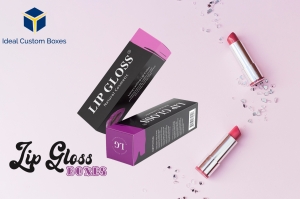Choosing the right iPhone 14 case is crucial for protecting your device and enhancing its functionality. With numerous options available, it's essential to understand the key features that make a case effective, as well as the differences between materials like real leather and faux leather. This guide will help you navigate the essentials of iPhone 14 cases, ensuring you make an informed choice.
Key Features to Look for in an iPhone 14 Case
1. Shock Absorption
One of the primary purposes of a case is to absorb shocks from drops or impacts. Look for cases that feature shock-absorbing materials, such as TPU (thermoplastic polyurethane) or silicone, which can help mitigate damage to your iPhone 14 in the event of a fall. Some cases also include reinforced corners or air cushion technology to enhance protection.
2. Waterproof or Water-Resistant Capabilities
If you frequently use your iPhone 14 in environments where it might get wet—such as near pools, beaches, or during rainy days—a waterproof or water-resistant case is a must. These cases provide a barrier against moisture, protecting your device from water damage and ensuring it remains functional even in challenging conditions.
3. Slim and Lightweight Design
While protection is vital, you don't want your iPhone 14 to feel bulky. Look for cases that offer a slim profile while still providing robust protection. Lightweight designs allow for easier handling and portability, making your device more convenient to use daily.
4. Accessibility to Ports and Buttons
Ensure that the case you choose allows easy access to all ports, buttons, and features of your iPhone 14. A good case should not obstruct charging ports, headphone jacks, or volume buttons, allowing you to use your phone without having to remove the case frequently.
5. Aesthetic Appeal
Your iPhone 14 case should reflect your personal style. With various designs, colors, and materials available, you can find a case that complements your taste while providing essential protection. Whether you prefer sleek and modern or bold and vibrant, there are options for everyone.
Real Leather vs. Faux Leather: What's the Difference?
When selecting a case, the material can significantly impact both the aesthetics and functionality. Here's a breakdown of the differences between real leather and faux leather:
Real Leather
- Durability: Real leather is known for its durability and longevity. It develops a unique patina over time, adding character to the case.
- Feel: The texture of real leather is often softer and more luxurious than faux leather, providing a premium feel.
- Maintenance: While durable, real leather requires regular care and conditioning to maintain its appearance and prevent drying or cracking.
- Cost: Cases made from real leather tend to be more expensive due to the quality of the material and craftsmanship involved.
Faux Leather
- Affordability: Faux leather cases are generally more affordable than their real leather counterparts, making them accessible to a broader range of consumers.
- Variety: Faux leather is available in various colors and textures, allowing for a wider selection of styles.
- Maintenance: These cases are often easier to clean and maintain since they are less prone to damage from water or spills.
- Ethical Considerations: For those who prefer cruelty-free products, faux leather is an ethical alternative that does not involve animal products.
Conclusion
When selecting an iPhone 14 case, consider essential features such as shock absorption, waterproof capabilities, and accessibility. Additionally, understanding the difference between real and faux leather can help you choose a case that aligns with your lifestyle and values. Whether you opt for the luxury of real leather or the affordability of faux leather, ensuring your device is well-protected will keep it looking great and functioning optimally for years to come.





